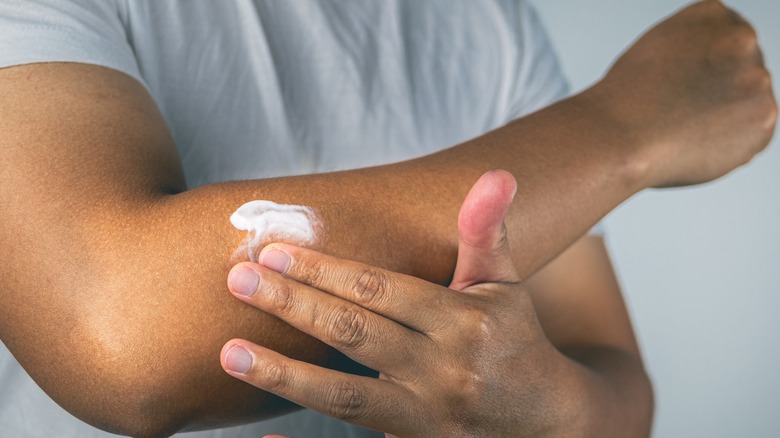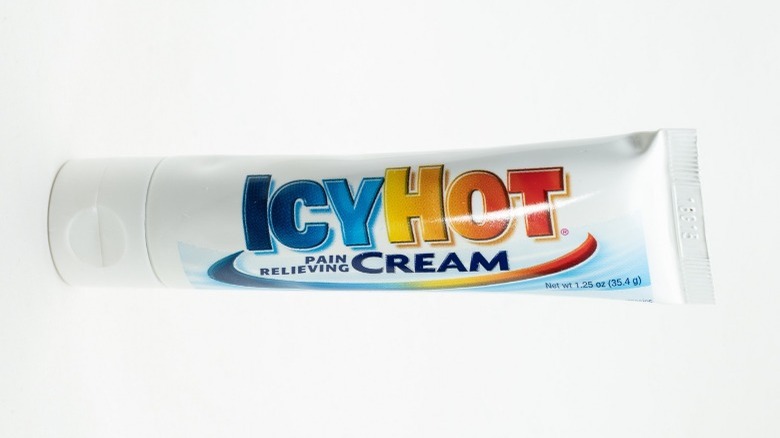Health Digest Survey: Which Topical Pain Relief Cream Do People Prefer?
Topical pain relief products are designed to do exactly what they suggest: relieve pain. Coming in the form of gels, creams, sprays, patches, and more, these products are intended to be applied directly to the skin, reports WebMD. That being said, how exactly do they work in order to alleviate those uncomfortable aches?
Many pain relief creams work by stimulating a heated or cooling sensation on the skin, often using ingredients such as menthol, camphor, methyl salicylate, or capsaicin (per WebMD). In a 2017 scientific overview published in The Cochrane Database of Systematic Reviews, researchers explain that topical pain relief products are frequently used to relieve both short-term and chronic pain conditions, including osteoarthritis, strains, sprains, muscle aches, tendonitis, lower back pain, and more. Although many different brands of topical analgesic drugs can be found on the market, some people may prefer certain products over others. In a survey of 610 participants, we discovered the top pain relief cream preferred by readers of Health Digest.
People prefer Icy Hot for topical pain relief
Out of five answer choices, Aspercreme received 63 votes, making it the least selected answer option overall. As per the product website, Aspercreme targets joint pain and offers an alternate version of its product containing lidocaine for numbing the area. With only five more votes than Aspercreme was Bengay, making up a little over 11% of total answers. The company highlights its topical pain relief products as fast-acting for all sore spots on the body. In third place was Voltaren with 95 votes, making up 15.57% of answers. Catering specifically to arthritis pain, Voltaren works by easing stiff muscles in order to increase one's mobility. Competing for first place were Biofreeze and Icy Hot. However, Icy Hot came out ahead with 238 votes over Biofreeze's 146 votes. Leveraging a menthol formula, Biofreeze uses cold therapy treatment to provide quick, prolonged pain relief, as reported via its website. Icy Hot, on the other hand, uses a combination of hot and cold sensations known as contrast therapy (via Icy Hot). The cooling effect allows for fast relief, followed by heat for a long-lasting effect.
While these products may offer much-needed relief, the Cleveland Clinic cautions that most topical pain relief creams should not be used for more than a week, as doing so can increase one's risk for rash, or in some cases, chemical burns.


